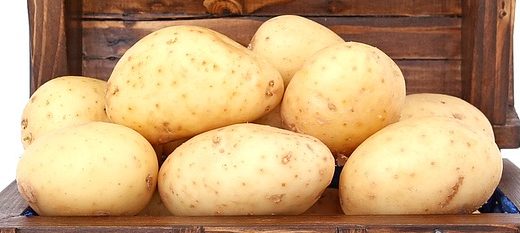Terms of Reference (TOR) for Conducting Endline Survey for Sustainable Production and Consumption of Orange Fleshed Sweet Potatoes (OFSP) Project – ChildFund International
1.Background and Context
Due to the persistent shortage of food in Turkana and Samburu counties, a significant proportion of children are put at risk. The National Drought Management Authority (NDMA) indicated almost 15.1% of the children were at risk in June 2019. To reduce the risk faced children and vulnerable population emanating from food and nutrition insecurity, there is need for creation of safety nets assets to bolster sustainable food production systems. The SMART Survey team of both counties proposed that this can be achieved though promotion of Agri-nutrition farms through irrigation; improving skills and awareness on agriculture technology; scaling up service delivery in hard-to-reach areas and managing and strengthening of food value chain. Other proposed interventions would include strengthening agricultural production and stabilizing food markets.
It is within this context that the Orange Fleshed Sweet Potato (OFSP) project was borne so that it would provide nutritious food to most children at risk of nutritional disorders and vulnerable groups. Sweet potato, the seventh most important staple food globally, produces more edible energy per hectare per day than wheat, cassava or rice (Woolfe, 1992). Orange fleshed sweet potato varieties provide carotene, a precursor for vitamin A, that reduces vitamin A deficiency (VAD) in children and lactating mothers (Low et al., 2001). The crop is consumed as fresh roots or as leaves and is also processed into animal feed, starch, flour, candy and alcohol (Chiona, 2009). According to Woolfe (1992) sweet potato can be substituted for wheat in bread, cereals and in many tasty, nutritious recipes. Unlike cereals, sweet potato is harvested all year-round providing a long-term solution for vitamin A deficiency (Mwanga & Ssemakula, 2011). The crop is adaptable to diverse environments because it tolerates high temperatures, low fertility soils, can grow in areas with low annual rainfall and is easy to propagate (Stathers et al., 2013). Orange fleshed sweet potatoes offer an alternative means of addressing vitamin A deficiency because they contain high levels of beta carotene. Through a project it implemented in the dry parts of Makueni county, ChildFund Kenya found that good yields of OFSP can be obtained even in areas that receive less rainfall. Results of the project also showed that consumption of OFSP has potential for reducing Vitamin A deficiency thus reducing chances of malnutrition among children and lactating mothers. This project aimed at scaling up the OFSP project success in Emali area of Makueni to two sub-counties in Turkana and one sub-county in Samburu counties.
2.About ChildFund Kenya
ChildFund is an international child-centered development organization. We are a member of the ChildFund Alliance; a global network of 12 organizations that assists more than 15 million children in 58 countries around the world. ChildFund works throughout Asia, Africa, and the Americas to connect children with the people, resources, and institutions they need to grow up healthy, educated, skilled and safe, wherever they are. The organization is a member of the ChildFund Alliance; a global network of 12 organizations that assists more than 15 million children in 58 countries around the world.
ChildFund’s vision is a world in which every child realizes their rights and achieves their potential. Our three-fold mission is to help children living in deprivation, exclusion, and vulnerable situations to improve their lives and become adults who bring positive changes to their communities; to promote societies that value, protect and advance the worth and rights of children; and to enrich supporters’ lives through their support of our cause.
In Kenya, ChildFund works through 11 Implementing Partners (IPs) and 2 Direct Implementing Partners in 27 counties. Our thematic focus areas are Child Protection, Household Economic Strengthening, Early Childhood Development, Education, Water, Sanitation, and Hygiene (WASH), Emergency Response, Health, and Nutrition. The programming of interventions in each of these sectors is informed by three Life Stages. These are Life Stage 1 (0 – 5 years), Life Stage 2 (6 – 14 years), and Life Stage 3 (15 – 24 years). Child protection, disability mainstreaming, and gender inclusion are cross-cutting interventions implemented across the life stages.
2.About Orange Fleshed Sweet Potato Project
ChildFund Kenya is partnering with BMZ-Germany and implementing a project on Sustainable Production and Consumption of the Orange Fleshed Sweet Potatoes Project (SEWOH-BMZ Grant). The overall objective of the OFSP or SEWOH project is to build the resilience and livelihoods of women and children of vulnerable farming households in Turkana and Samburu counties. The project is implemented through collaboration between three local non-governmental organizations (Frontiers Children Development Organisation (FCDO), Samburu Children’s Program (SCP) and SAPCONE) that work with women, children and youth in Turkana and Samburu Counties. They are supported by ChildFund Kenya, which oversees the project activities. The project was anticipated to reach 2,460 households, directly or 17,200 people, including women, children and youth. It is expected to have an indirect impact on about 40,000 people who live in the same areas. Most of the direct beneficiaries (69%) are children under five years old, who are vulnerable to vitamin A deficiency (VAD). The project is expected to empower about 3,000 women and 2,200 youth by involving them in the OFSP value chain system, thus improve their livelihoods.
2.1. Project Goal
Enhanced resilience and livelihoods of women and children of vulnerable farming households in Turkana and Samburu counties.
2.2. Project Outcomes
Economic and nutrition status of 12,000 children, 3000 women and 2,200 youth are improved through adoption of OFSP innovative technologies in Turkana and Samburu counties by August 2023.
2.3. Project Outputs
- Sustainable adoption of appropriate OFSP production technologies by 600 farmers
- OFSP products are accepted as household diet in target communities.
- Improved economic opportunities for women and youth in OFSP value chain.
- Increased community and stakeholder awareness on nutrition and economic value of OFSP
- The staff of the three local partners are trained in the areas of governance, project management child protection, gender and advocacy.
3.Purpose of the Evaluation
3.1. General objective: This endline study seeks to assess the relevance, effectiveness, efficiency, coherence, impact and sustainability of the project.
3.2. Specific objectives
- To assess the changes at the end of the project based on a comparison of the initial status as per baseline survey versus the current situation of women, youth and children of vulnerable farming households in Turkana and Samburu counties.
- Identify the best practices and lessons learned experienced and achieved during the implementation of the project.
- Recommend suggestions that will improve similar future projects based on what went well/did not go well.
4.Scope of Work
The evaluation will cover all project activities from September 2020 to March 2024 implemented in Turkana Central, Loima and Samburu North Counties.
5.Methodology
The consultant should propose the appropriate study design and data collection techniques for the evaluation. The identified approach should facilitate data validation, reduce likelihood of bias and enrich the findings based on the evaluation questions and objectives. The tools may include household surveys, Key Informant Interviews (KII) and FGDs. In each case a detailed description of the tools should be provided and the relevance in the data collection process. Other areas of interest would include sampling design, data collection and analysis procedures, quality assurance and ethical considerations.
5.1. Evaluation Questions
The purpose of this evaluation is to assess the progress against the goal and to provide a body of evidence for the donor about the impact of the project. The following questions should guide the evaluation.
Relevance
- To what extent did the project respond to the needs and priorities of the direct project participants i.e. children under 5 years, women/female caregivers, youth?
- How were the project participants involved in the design and implementation processes?
- To what extent did the project address the strategies and priorities of involved institutions or partners such as government (national and counties), civil society organisations, private entities and BMZ SEWOH?
- To what extent were the projects’ intervention’s relevant to global needs, policies and priorities including but not limited to sustainable development goals?
- To what extend where the activities, outputs, and strategies relevant to achieving the intended effects?
- Were there potential tensions or trade-offs made regarding stakeholders whose needs and priorities were not met or met through the intervention? If so what were the differences and explore what choices were made?
- How were contextual factors: economic, environmental, equity, social, cultural, political economy and capacity understood and accounted for when the intervention was designed? How did this affect the project’s relevance over time?
Coherence
- To what extent was the project interventions linked with the ChildFund Kenya Country Strategic Plan priorities and interventions, ?
- To what extent was the project interventions linked with the FCDO, SCP and SAPCONE other interventions such as annual operating plan activities?
- Was the project intervention consistent with other actors’ interventions in Turkana and Samburu counties? What were the areas of complementarity, harmonization and co-ordination with others, and how did these avoid duplication of effort?
Effectiveness
- What proportion of targeted women and youth households have reported increased monthly income from baseline?
- What proportion of targeted women and youth households have reported reduced household hunger score from baseline?
- Have there been an increase in the proportion of farmers supported by agriculture extension workers both within and without the project target locations?
- Has there been an increase in the acreage under OFSP cultivation in the 3 sub counties in Turkana and Samburu counties?
- Has the project contributed to increased OFSP production in the project areas by the targeted farmers?
- Has the project led to FCDO, SAPCONE, SCP and other stakeholders capacities to sustainably promote the adoption of OFSP technologies?
- Are more ECD children benefitting from OFSP meals bi weekly during harvest time compared to baseline? How many children?
- Has the project contributed to the adoption of OFSP as a regular dietary staple food at the household level in the target area?
- How many trained women and youth are participating in at least one OFSP value chain activity in the project area? How does this compare to baseline?
- Did the project contribute to increased volumes of OFSP being sold in the markets in the project area?
- Did the project contribute to increased awareness of OFSP and its nutritional benefits among community members in project area?
- Did the project contribute to organizational capacity of the board of management and staff on project management and financial management?
- What were the major factors influencing the achievement or non-achievement of the objectives?
Efficiency
- To what extent was the project cost-effective? Consider if the project was implemented in the most cost-efficient way or not?
- Were the human and financial resources used as planned and appropriately and fully utilized (or were resources misallocated, budgets underspent, overspent)?
- Were resources redirected as needs changed? Were risks managed? Were decisions taken which helped to enhance efficiency in response to new information? Were the logistics and procurement decisions optimal?
- Were the results achieved within the intended timeframe. Was the timeframe being realistic or appropriate in the first place? Were adjustments made during the intervention to overcome obstacles and mitigate delays?
- How did the project consider inequalities and power dynamics in the Turkana and Samburu context?
Impact
- Has the intervention caused a significant change in the lives of the intended beneficiaries?
- How did the intervention cause higher-level effects (such as changes in norms or systems)?
- Did all the intended target groups, including the most disadvantaged and vulnerable, benefit equally from the intervention?
- Is the intervention transformative – does it create enduring changes in norms – including gender norms – and systems, whether intended or not?
- Is the intervention leading to other changes, including “scalable” or “replicable” results?
- How will the intervention contribute to changing society for the better?
Sustainability
- Explore the likelihood that the intervention and/or its benefits will continue after the donor funding ceases. Particular attention should be given to the environmental dimension of the project and the role which local governments (Samburu and Turkana Counties) has to fulfil to ensure the sustainability of the project.
6. EXPECTED DELIVERABLES
Inception report: The inception report shall outline the key scope of the work and intended work plan. The inception report will provide ChildFund kenya the opportunity to verify that they share the same understanding about the Terms of Reference and should therefore detail the consultant’s understanding and interpretation of the TOR, methodology, implementation schedule, and data collection – encompassing: structuring of study; review of documents; quantitative/qualitative data collection; and data collection instruments design (sample size, field Work Planning and implementation, data collection plan, data entry and analysis plan), and budget forecast. The inception report will be discussed and agreed upon with ChildFund Kenya and project partners.
Draft Endline Report: The report shall consist of executive summary, background, methodology, findings by objective/evaluation criteria, conclusion and recommendations. The annexes should be attached including updated M&E impact matrix, raw datasets, analyzed data sets, a copy of the TOR, list of stakeholders consulted.
Validation Workshop: The draft report will be validated through a centralized workshop organized by ChildFund Kenya to corroborate the findings.
The final report: This will be presented 5 days after the validation workshop and receiving comments on the draft report.
7. TIME FRAME
The assignment will take place within 30 days. It is expected that the evaluation should be completed by 29TH March 2024.
8. MANAGEMENT AND COORDINATION
The key people that the consultant will be working closely with include the OFSP/SEWOH Project Coordinators and the respective Project coordinators of FCDO, SCP and SAPCONE. The consultant will also work with the ChildFund Country Office teams i.e. DRR and Food Security Livelihoods Specialist, the Post Award Compliance Specialist and MEL Manager. The day-to-day management of the consultants is the responsibility of the OFSP Project Coordinator and M&E Officer
9. QUALIFICATIONS OF THE CONSULTANT
ChildFund Kenya seeks to engage the services of qualified and experienced consultant with adequate experience in research and appraisal of development programmes in Food Security/Household Economic Strengthening in similar value chains to undertake the assignment.
Desired Qualifications & Experience
The Consultant(s) must have the following qualifications and experience: –
- Demonstrated experience in conducting evaluation studies and participatory rural appraisal methods.
- A minimum of five (5) years working experience in community development work is desired.
- An advanced degree (Masters and above) in Development Studies or Social Sciences, M&E, Sociology or Agriculture.
- Demonstrated practical and recent working experience on a similar value chain will be an added advantage preferably in ASAL counties.
- Ability to prepare factual and well-articulated reports. Attach a sample report summary (with client consent)
- Excellent drafting and communication skills in English
10. BUDGET, LOGISTICS AND PAYMENT
The consultant shall submit the proposed Financial Proposal with broken down costs for items, for the assignment, including breakdown and justification. Payment of the consultant will be in two batches; an initial 40% of the total agreed consultancy amount will be paid to the consultant upon submission and acceptance of an inception report and the final 60% will be paid upon submission and acceptance of the final report by the consultant.
11. SUBMISSION OF PROPOSALS
The Technical and Financial proposals MUST be prepared in line with the implied standards and be submitted in a timely manner as indicated in this TOR. A Technical Team at ChildFund Kenya will review the proposals based on pre-determined objective criteria. Upon selection, the consultant(s)/consulting firm would be invited for a discussion and requested to submit a detailed inception report and work plan prior to starting any data collection exercise.
The proposal from firms/individual should comprise technical and financial proposal. The Proposal will be accepted preferably in soft copy through email and mentioning subject line; “ENDLINE SURVEY STUDY – SUSTAINABLE PRODUCTION AND CONSUMPTION OF ORANGE FLESHED SWEET POTATOES (OFSP) PROJECT IN TURKANA AND SAMBURU.
Technical proposals should include the following:
- Profile of the consultant/firm
- Overview of the assignment as you understand it.
- The methodologies and approach(es) to be applied in undertaking the assignment.
- A comprehensive budget covering professional fees and expenses related to carrying out the assignment. (including enumerators costs, hall hire etc)
- Detailed activity timeline for undertaking the assignment.
- The report outlines that the consultant intends to use for the final report.
- A list of previously conducted review and evaluation assignments.
ChildFund Kenya is committed to safeguarding the interests, rights, and well-being of children with whom it is in contact and to conducting its programs and operations in a manner that is safe for children.
How to Apply
Interested Firms/Individuals who meet the above qualifications should send their applications to kenyaprocurement@childfund.org by 16th February 2024. Only shortlisted firms/individuals will be contacted.








